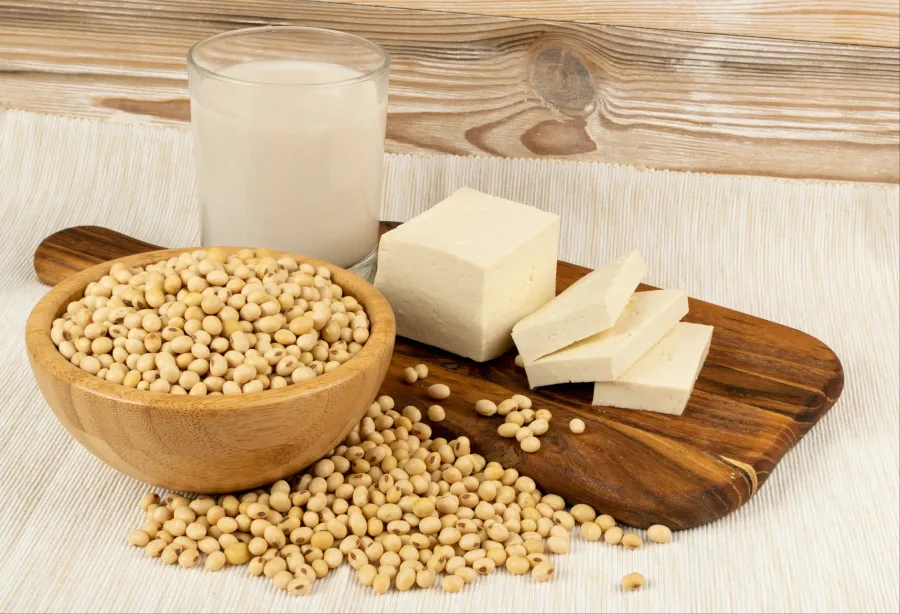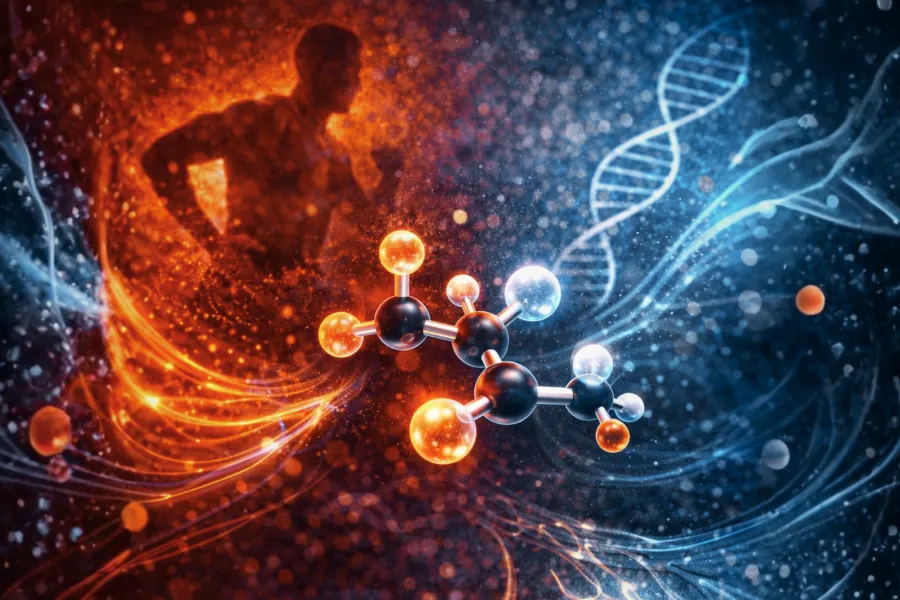Editorial by Dr. Seiji Aoyagi
Chief Science Officer, NiHTEK®
- Chief Science Officer at NiHTEK®
- 35+ years in sports & clinical nutrition (Japan)
- Leads NiHPRO®Family (Core, Bev, Puffs) & KARBFiX® science
- Guides APH™ & MPi™ technology programs
- University/hospital collaborations on human studies
- Champion of third-party validation (Informed-Choice®, Informed-Protein®)
- Principal scientific spokesperson for “Protein For EveryBODY™”

Soy protein, particularly in forms like soy protein isolate (SPI) and soy protein concentrate (SPC) is a prevalent ingredient in plant-based foods and supplements. Yet, multiple concerns have arisen regarding its production, nutritional value, digestive effects, allergenicity, hormonal impacts, and environmental footprint.
Soy Protein Isolate (SPI) is produced by defatting soy flakes, commonly using hexane as the solvent followed by alkaline or acid extraction, isoelectric precipitation, and drying processes [1, 2]. Hexane, a volatile organic solvent, is widely used in oilseed processing but raises environmental and health concerns due to its flammability and neurotoxicity [3]. Notably, residual hexanal, a marker of lipid oxidation and possible solvent traces, has been identified in some commercial SPI products [4]. While manufacturers assert that hexane is fully removed during processing, peer-reviewed studies suggest trace residues may persist at low levels [5].
Digestive Effects and AntiNutrients
Soy naturally contains anti-nutritional factors such as phytic acid, trypsin inhibitors, and oligosaccharides, which can impair mineral absorption and cause digestive discomfort (e.g., gas, bloating, diarrhea), particularly in non-fermented forms like SPI [6, 7]. Phytic acid binds essential minerals like iron and zinc, reducing their bioavailability [8]. Trypsin inhibitors interfere with protein digestion, while raffinose and stachyose (types of oligosaccharides) are poorly digested in the small intestine, leading to fermentation in the colon [9]. However, germination (sprouting) of soybeans significantly reduces trypsin inhibitor activity and enhances digestibility, highlighting nutritional concerns with traditional SPI processing [10].
Allergic Reactions
Soy is a major food allergen, affecting approximately 0.3% of the general population, including both children and adults [11]. Allergic reactions can vary from mild symptoms such as hives and gastrointestinal discomfort to severe manifestations like anaphylaxis [12]. In infants, soy allergy may also present as Food Protein-Induced Enterocolitis Syndrome (FPIES), a delayed and potentially serious gastrointestinal response to soy protein [13]. Due to the widespread use of soy derivatives in processed foods, cosmetics, and pharmaceuticals, strict label scrutiny and avoidance are essential for affected individuals [14].

Hormonal Effects and Thyroid Interactions
Soy contains phytoestrogens, particularly isoflavones such as genistein and daidzein, which are structurally like human estrogen and can bind to estrogen receptors in the body [15]. While early animal studies raised concerns about potential hormonal disruption, comprehensive human clinical trials and meta-analyses have demonstrated no significant adverse effects on reproductive tissues, fertility, or male testosterone levels [16, 17].
Environmental and Ethical Implications
While soy is often promoted as a sustainable crop, its expansion, particularly in South America has been a major driver of deforestation, notably in the Amazon rainforest [18]. Although most soy is used for animal feed rather than human food, the growing global demand indirectly fuels land clearing for soy monocultures, contributing to biodiversity loss, carbon emissions, and disruption of indigenous lands [19]. Even when used in products like SPI, concerns remain around supply chain traceability, as raw soy inputs may originate from ecologically sensitive or illegally deforested zones [20, 21]. This underscores the importance of sourcing soy from deforestation-free certified suppliers and promoting regenerative agricultural practices.
Considering the evidence, soy protein, particularly in its isolated and concentrated forms, presents a complex nutritional and ethical profile. While it remains a versatile and protein-rich option for many plant-based diets, concerns surrounding chemical residues from processing, anti-nutritional compounds, allergenicity, hormonal interactions, and environmental degradation cannot be overlooked. Advances in cleaner extraction methods, increased transparency in sourcing, and the adoption of regenerative agricultural practices are essential to mitigating these risks. As consumer demand continues to rise, striking a balance between health benefits, ecological stewardship, and food safety will be pivotal in shaping the future of soy-based nutrition.
References
- Liu, K. (1997). Soybeans: Chemistry, Technology, and Utilization. Springer US.
- S. Food and Drug Administration (FDA). (2016). GRAS Notice for Soy Protein Isolate.
- (2001). Hexane CAS No: 110-54-3 SIDS Initial Assessment Report.
- Riaz, M. N. (2006). Soy Applications in Food. CRC Press.
- Centre for Science in the Public Interest (CSPI). (2009). Hexane: A Hidden Hazard in Processed Foods.
- Gilani, G. S., et al. (2005). Journal of AOAC International, 88(3), 967–987.
- Friedman, M., & Brandon, D. L. (2001). Journal of Agricultural and Food Chemistry, 49(3), 1069–1086.
- Hurrell, R. F. (2003). Journal of Nutrition, 133(9), 2973S–2977S.
- Flatulence Factors in Legumes. (2006). In: Handbook of Nutraceuticals and Functional Foods, 2nd ed.
- Vidal-Valverde, C., et al. (2002). Food Chemistry, 77(3), 327–336.
- Savage, J., & Johns, C. B. (2015). Immunology and Allergy Clinics, 35(1), 45–59.
- Sicherer, S. H., & Sampson, H. A. (2014). Journal of Allergy and Clinical Immunology, 133(2), 291–307.e5.
- Nowak-Węgrzyn, A., et al. (2017). Journal of Allergy and Clinical Immunology: In Practice, 5(2), 370–378.e2.
- Food and Drug Administration (FDA). (2022). Food Allergen Labeling and Consumer Protection Act of 2004 (FALCPA).
- Setchell, K. D. R., & Cassidy, A. (1999). Journal of Nutrition, 129(3), 758S–767S.
- Messina, M. (2010). Journal of Nutrition, 140(12), 2289S–2295S.
- Hamilton-Reeves, J. M., et al. (2010). Fertility and Sterility, 94(3), 997–1007.
- Gibbs, H. K., et al. (2015). Science, 347(6220), 377–378.
- Henders, S., Persson, U. M., & Kastner, T. (2015). Environmental Research Letters, 10(12), 125012.
- (2021). Soy and Deforestation. https://www.worldwildlife.org
- (2020). The hidden deforestation risk in soy supply chains. Stockholm Environment Institute and Global Canopy.





